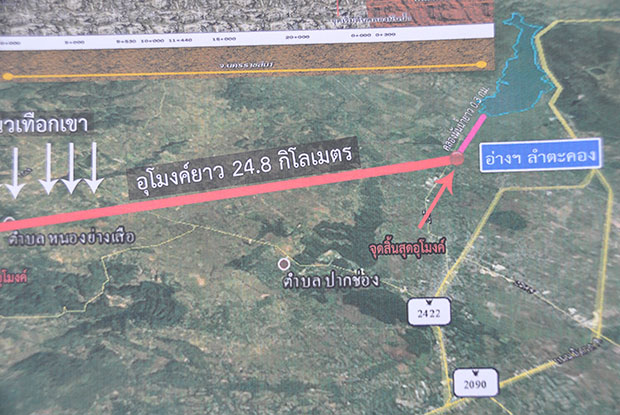
NAKHON RATCHASIMA - Regional Irrigation Office 8 on Friday unveiled a 4-billion-baht project to channel water from the Pasak Jolasid dam in Lop Buri to Lam Takong reservoir in Nakhon Ratchasima, to address a water shortage in the province.
Sunai Klummon, chief engineer overseeing Nakhon Ratchasima, said the agency had completed the design work for the project, intended to ensure an adequate supply of tap water in five districts of the province - Muang, Sikhiu, Sung Noen, Kham Thale So and Chalerm Phrakiat.
He said the project would have three parts: a water pumping station at the Pasak Jolasid dam; another at Muak Lek reservoir in Saraburi; and a tunnel through Nong Yang Sua Mountain in Saraburi.
The first pumping station would be on the downstream side of the Pasak Jolasid dam, pushing water from the dam along a 9.9 kilometre pipeline through tambon Nong Bua in Phatthana Nikhom district, Lop Buri, to the Muak Lek reservoir, which could hold around 60 million cubic metres.
The second station would be immediately downstream of Muak Lek reservoir, drawing water from the catchment to Nong Yang Sua Mountain through a 4.8km pipeline.
Lastly, a tunnel three metres in diameter will be cut through the mountain. It will be 24.8km long, from the mountain to Pak Chong district in Nakhon Ratchasima. Water flowing into canals will be diverted to the Laem Takong reservoir.
Mr Sunai said the office was now ready for the environmental impact assessment (EIA) to begin. A 3-million-baht budget for the study had already been approved by the government.
The project’s design will be proposed to a provincial supervisory committee for consideration, so the EIA can start soon, he said.